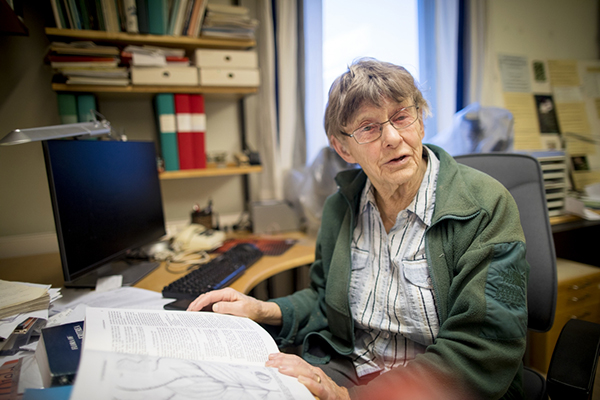Inga Hedberg, born and reared in Luleå, left home to study genetics in Uppsala way back in 1947. Her parents were not entirely sure it was a good idea, but were happy once their daughter earned her teaching qualification, even though Inga actually never practised as a teacher. She met her husband Olle in the canteen, and it was he who introduced her to the delights of botany, a subject she has remained faithful to ever since. After five children, it was time for Inga to pursue her doctorate and she finished her thesis in 1970, on the subject of sweet vernal grass with varying chromosome counts and chromosome morphology.
As for Olle Hedberg, he spent almost a year in East Africa in 1948, collecting plants for his doctoral thesis. Many years later, that work led to Olle and Inga being asked whether they would like to be involved in creating Flora of Ethiopia and Eritrea. They were both very keen on the idea. It took some time to get started and the project did not receive funding until 1980 - some 17 years later. Inga’s first reaction was that it had taken too long and she did not really want to dive into the flora project. Fortunately, she changed her mind and, and in 2009 the project could finally be wrapped up, after almost 30 years.
“Olle and I were involved in the field work at first, but our work later became more administrative. I probably wouldn't do it again; it was a Herculean task to gather all the manuscripts from the almost 100 botanists included in the project, but of course I am proud of the results and I am, or at least I was, a very good organiser.”
Olle died in 2007 and Inga’s lifelong partner sadly never got to see the last volume of the flora in print.
“It was a huge loss, you know. We had lived and worked together for 54 years. We complemented each other like two pieces of a jigsaw puzzle, but life had to go on, the project was to be concluded and it was nice to have something to go to. Now I want to try and realise the idea of digitalising the entire flora and making it accessible. This is a demanding effort, which also costs money and includes colleagues at the university in Addis Ababa and a European university, but I am stubborn, a characteristic my old chemistry teacher described as a virtue!”
Inga still walks the short distance from her home in Kåbo to the department almost every day. In other words, she is far from being an inactive pensioner; she is heading up a project to preserve and replant forests in Mozambique, for instance, and is also working to digitalise Olle's 1948 field notes from East Africa.
“The notes are not always easy to interpret and making a fair copy is a huge but worthy endeavour, since his pioneering contributions resulted in a work that is still in demand,” said Inga.
Picture: Inga, Olle and their son Bengt Hedberg in Mt Guna, Ethiopia in 1986.
